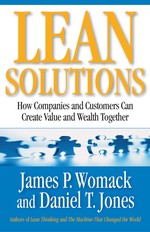Lean Solutions was written several years ago expanding the principles of Lean to consumption. The authors, Womack and Jones detailed a Lean roadmap and ask companies to start providing the goods and services consumers actually want, when and where they wanted them and without burden to the consumer. 
The authors provided compelling examples ranging from a variety of companies. Fujitsu, a leading service company for technology, has transformed the way call centers solve problems— learning how to eliminate the underlying cause of current problems rather than fixing them again and again. Tesco’s lean provision systems have enabled the company to emerge as the leanest, highest-quality, and best-managed retailer in Europe. An extremely successful car dealership has adopted lean principles to streamline its business, making for dramatically reduced wait time, fewer return trips, and greater satisfaction for customers— and a far more lucrative enterprise.
Are all Lean organizations implementing these practices on the consumption side? Has Lean crossed that bridge from supply to the demand side? Alan Mitchell, co founder of Mydex and Crtl-Shift presents “Responding to the Empowered Consumer” at the Lean Enterprise Academy’s annual conference “Lean Summit 2011 – Solving Business Problems” I think he has a few answers why Lean Thinking on the demand/consumption side has fallen short.
The entire presentation is interesting. You can choose to start at the 20:00 mark to review only the part on Lean Solutions.
Related Information:
Lean Solutions: How Companies and Customers Can Create Value and Wealth Together
Does Lean Marketing deliver what the customer wants?
Do you understand where demand comes from?
In your Organization, who is responsible for Demand?

Comments are closed.